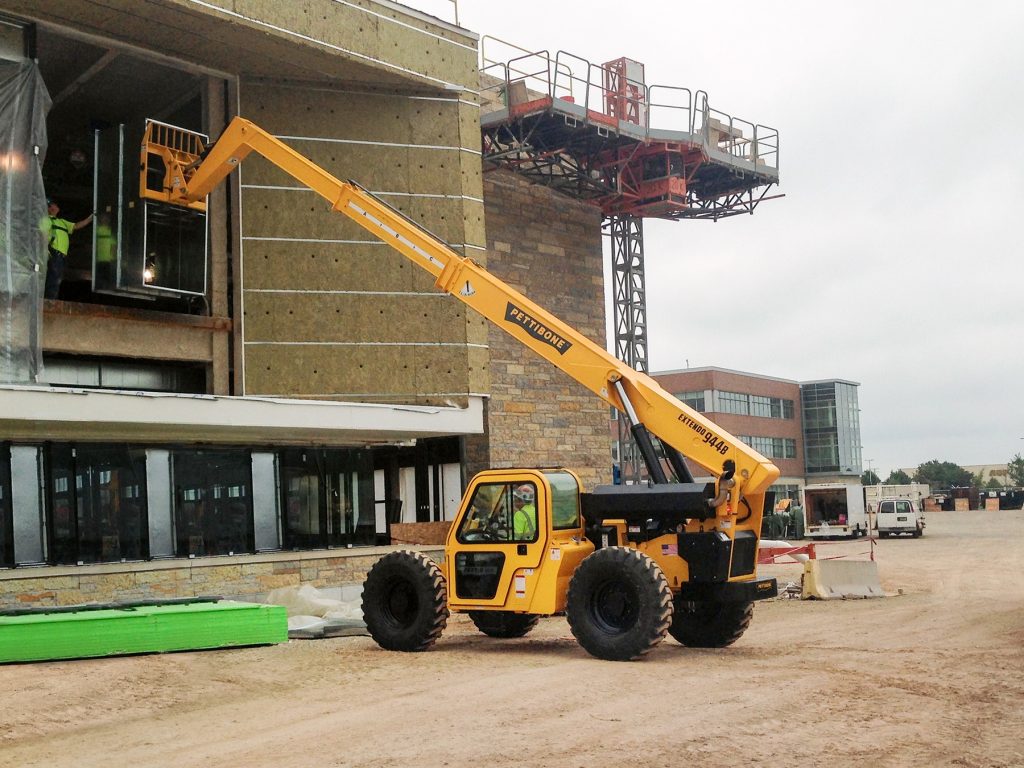While there’s no disputing the fact that busy building sites present more hazards than a dozen standard workplaces combined, this does not in any way mean that they necessarily have to be dangerous.
The statistics may seem to suggest otherwise as accidents are indeed common in such working environments, but at the same time, less than one in every 100 accidents that happen could not have been avoided.
In other words, 99% of building site accidents are quite easily preventable.
In terms of specific pieces of machinery, the telescopic handler represents a pretty perfect example on the whole. To take a look at the sheer size and power of these things is more than enough to realise that if proper safety precautions are not taken, things are going to go badly wrong. The only problem is that when things do go wrong, most are all too quick to play the blame game and point the finger at pretty much anyone but themselves. This is all despite the health and safety training all workers go through, which is the precise reason why an occasional reminder or two can go a long way.
When it comes to safe telescopic handlers, everyone on the site plays a role in making sure accidents are minimised or ideally avoided altogether.
Pedestrian Involvement
For example, you might think that if you’re not the one driving the telescopic handler, you’re pretty much out of the argument entirely. But no, as no matter what your role is on the site, you’re still an important link in the health and safety chain.
As a pedestrian, it’s your responsibility to:
- Be Visible – High visibility clothing exists for a reason and the same also goes for the walkways and paths separated from the areas in which heavy plant machinery is used. It’s a little like making sure nothing can go wrong in advance by not putting yourself at risk in the first place. If you don’t put yourself in a vulnerable position, you can’t be harmed as a result of it.
- Be Safe – Along with being seen, it’s also of crucial importance to be safe by using the correct personal protective equipment (PPE) as required. It exists for a reason, it’s not asking a lot and it could just save your life. It’s not often a telescopic handler driver is likely to drop something, but you never know for sure.
Driver Involvement
In terms of the driver’s role in safety, obviously, they have to know what they’re doing but there are certain supplementary health and safety rules that must be heeded at all times.
- Safety Features – If the telescopic handler is fitted with any safety features as standard, the driver must know how to use them and do exactly that. From reversing cameras to audible alerts for pedestrians to weight limit warnings and more, all add up to a safer working environment for all.
- Training and Experience – It sounds obvious, but it’s often important to be reminded that carrying out a job you aren’t fully qualified to do is bad news for everyone around you. Training for drivers of telescopic handlers is provided for a reason.
- Speed Checks – There’s always a maximum speed at which a telescopic handler should be driven around a building site and must be obeyed at all times.
- A Clear Head – In order to drive and operate a telescopic handler safely, you need to have your wits about you. This means that if anyone in such a position happens to feel a little tired, ill, hung-over or generally out of sorts, they shouldn’t be going near such a machine.
Management Involvement
For those slightly higher on the career ladder, the facilitating of proper health and safety when using telescopic handlers includes:
- Clear Areas – There must be separate roads for such vehicles to move and clearly marked paths for safe walking.
- Obstacles – Where movement is required, there must be no obstacles or obstructions which will inherently make the telescopic handler’s operation more hazardous.
- Maintenance – It’s the responsibility of the site’s managers to ensure that all heavy plant machinery is in a good state of repair and that any maintenance needed is carried out immediately.
- Driver Choice – There’s little more important than choosing the right person to take up the job of driving and operating the telescopic handler, so it’s crucial to be proactive and picky during the hiring process.
- Quality Machines – A poor-quality telescopic handler from a lacklustre provider can be a death trap in its own right. As such, it’s of the utmost importance to buy quality machines in the first place from a reputable name you know you can trust.

